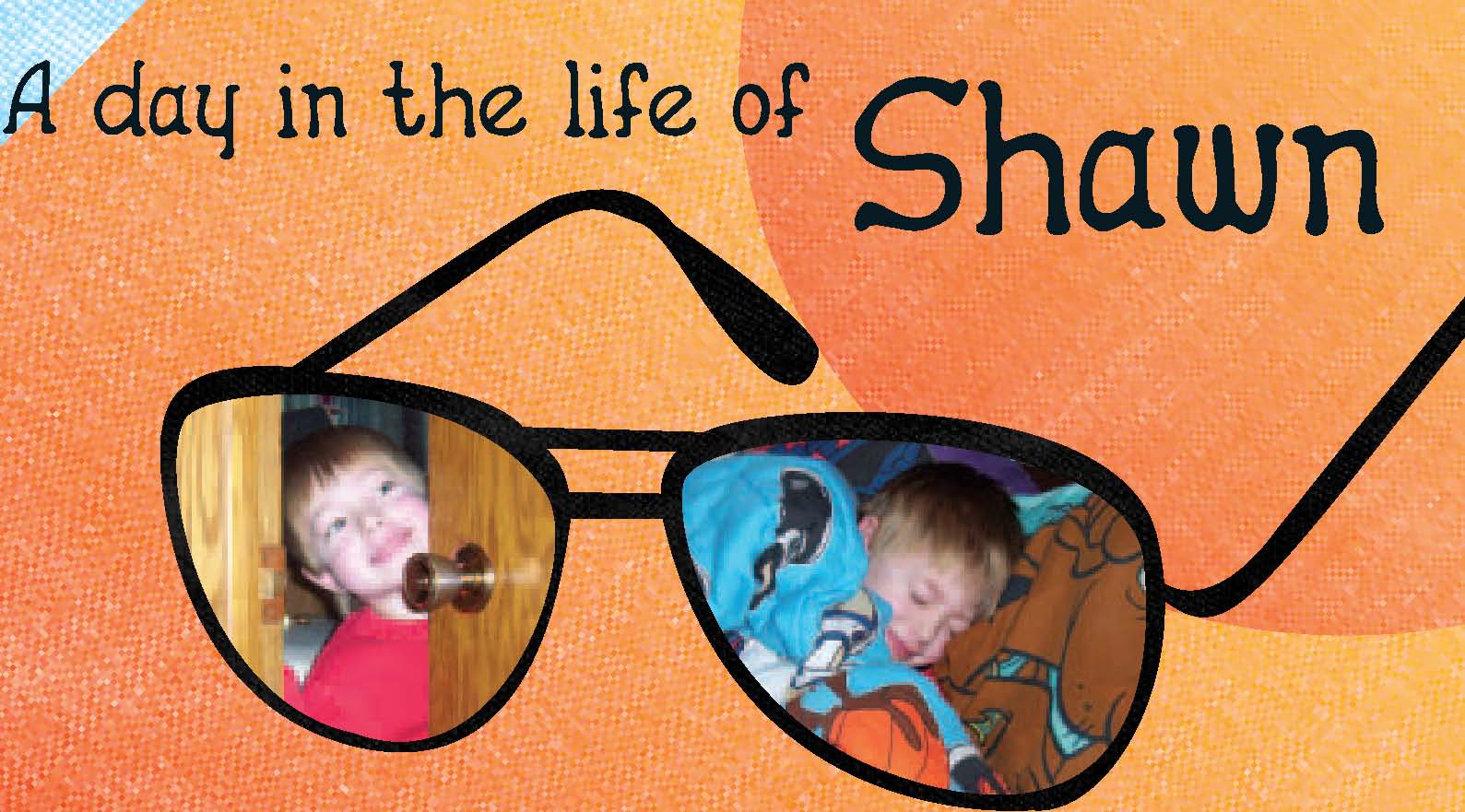

. . . a child with Cystinosis
I saw a patient with cystinosis for the first time in 1965. At that time these children died of kidney failure by ten years of age. Because of the dedication of many investigators and the cooperation of cystinosis patients and their families in clinical studies, cystinosis patients are now living active lives into adulthood.
Children with cystinosis seem normal at birth, but between 6 and 18 months of age they present for medical attention because the tubules in their kidneys do not work properly leading to a very large urine volume and the loss of salts and sugar in their urine. By allowing them to drink all the water they desire and replacing the urinary salt loss orally these children did well except for poor growth and progressive renal failure leading to complete renal failure as mentioned above.
Cystinosis is a genetic disease whose transmission is recessive. This means both parents have to be carriers of cystinosis. If they are, the chance of having a child with cystinosis is one in four for each preg-nancy. There are about 500 known cystinosis patients in the United States. The cystine comes from proteins as they are degraded in the cells. Proteins are constantly being made and degraded in the cell. A major site of protein degradation within the cell is the lysosome. As proteins are broken down into individual amino acids, each class of amino acids has a specific transport system to leave the lyso-some. The cystine transporter is synthesized following “instructions” from a gene on chromosome number 17. This gene is abnormal in cystinosis. Thus, the lysosomal cystine transporter is defective in cystinosis patients and cystine accumulates in the lysosomes and causes severe damage.
In the late 1960s, renal transplantation was first done in children. Cystinosis patients did very well with renal transplants, but as they lived longer, other organs began to fail. Especially debilitating is muscle weakness that makes it difficult to do things like swallow food. Investigators tried to find a specific treatment for cystinosis for many years without success. Examples of two things tried were a cystine-deficient diet and extremely high doses of Vitamin C. In both cases, parents were certain their children were getting better. Unfortunately, over time it became clear that both treatments were actually harming the children. This demonstrated how important it is to do carefully controlled studies.
In 1976, investigators found that the compound cysteamine removed cystine from cystinotic cells both in the laboratory and in one cystinosis patient. Years of careful study, reported in the New England Journal of Medicine, proved that cysteamine was an effective treatment for cystinosis. In 1994, the FDA approved cysteamine for cystinosis as Cystagon™
Cystagon™ enters the lysome and combines with cystine in a way that allows it to exit the lyosome. Unfortunately, Cystagon™ has a bad smell and taste and has to be taken every six hours to be maximally effective. Theoretically, if Cystinosis is diagnosed early and children never miss a dose of Cystagon™ we would expect a normal life expectancy, but most patients find this impossible. This is especially true in adolescence. Many patients still require renal transplants, but now in their late teens or early twenties, rather than at age 8 to 9 years. Patients who take Cystagon™ are not developing muscle weakness.
Unfortunately, Cystagon™ that is taken orally does not reach the cornea and conjunctiva of the eye in high enough concentration to remove the cystine crystals that develop in these sites. Thus, cysteamine eye drops must be used. They are very effective if used every hour while the patient is awake. I suspect that Shawn will start to use them soon. A drug company is about to submit a New Drug Application to the Food and Drug Administration for permission to market the cysteamine eye drops. This will make them much easier to obtain. Many cystinotic children who use the eye drops wear an alarm watch that rings every hour reminding them to use the drops. They do this so quickly that people with them sometimes don’t realize what they are doing.
Present-day research is attempting to find a form of cysteamine that does not have to be taken so frequently. We hope that in the future new approaches such as stem-cell therapies will be developed. For the present we are thankful that cystinosis patients are doing so much better than in the past.
Jerry A. Schneider, M.D. Research Professor of Pediatrics University of California, San Diego
My name is Shawn. This is a story about me and the disease called Cystinosis. This story will help you understand what I do
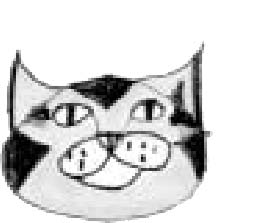
helpful cat who will help explain some of the
BIG words. There is a glossary at the end of
the book that explains more of the BIG words.
What is it like to have Cystinosis? Here is how my day goes. . .�
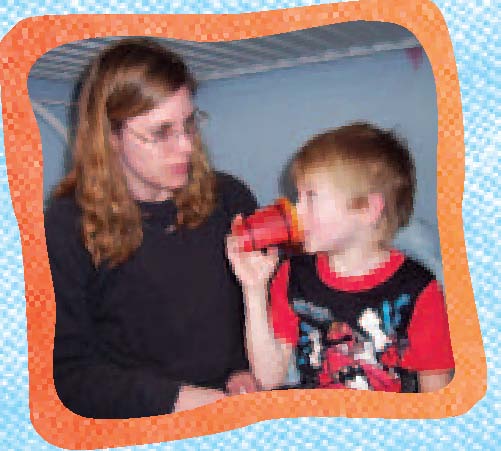 7:00 a.m.
7:00 a.m.
I wake up and my mom gives me my first medicines of the day. She doesn’t turn on the light because the 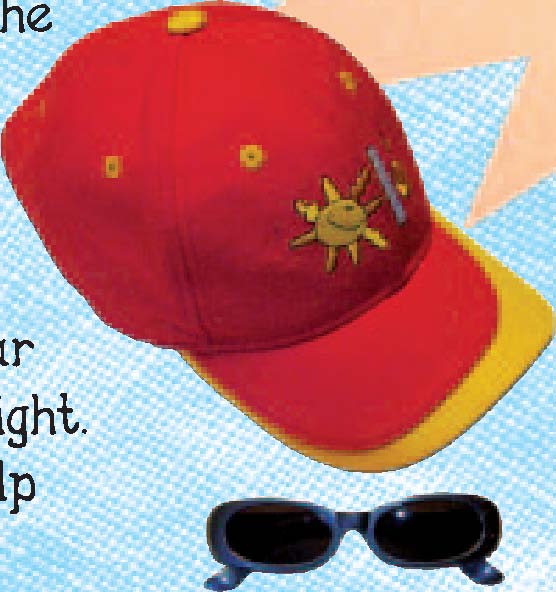
light hurts my eyes. So my mom gives me my medi
cine in the dark. I wear sunglasses and a hat whenever I am outside. I wear
them inside too if the light is too bright. My brother takes eye drops to help his eyes. I do not take them yet.
I take KPhos tablets and Cystagon capsules which 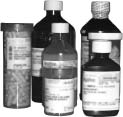
my mom dissolves in a little water because I can’t swallow the big pills. She mixes them up with strawberry syrup. The syrup covers up the bad taste of the medicine. I like my medicine sweet. My brother also has Cystinosis but likes
spicy food and so he takes his medicine with ketchup.
The medicine smells icky. It makes my stomach hurt. I am not hungry after I take my medicine. It makes my breath smell like *rotten eggs or fish. Sometimes my body smells too.

Cystagon -Medicine used to deplete the Cystine crystals that build up in the cells of a child with Cystinosis. Organs first affected are the eyes and kidneys. *This medicine is a sulfur compound and that is why it has a bad smell.
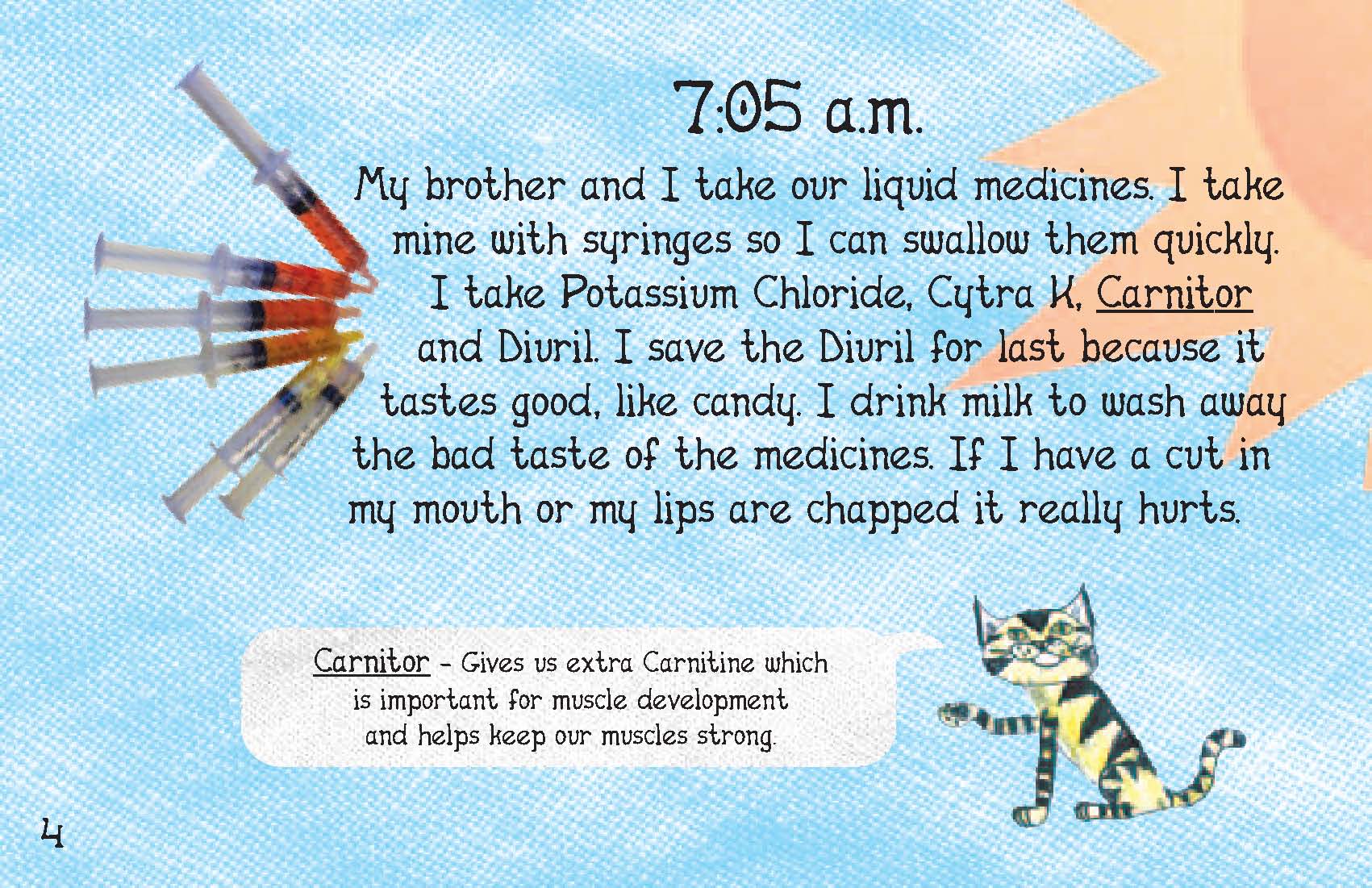
I don’t like to take my medicine. Sometimes I throw up after I take it because it makes me gag. Lots of kids who have this dis-ease have the same problem.
7:30 a.m.
My brother and my two sisters take the bus
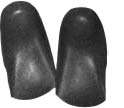 to school. I put on my shoes. Inside my shoes I have orthotics because my feet are flat and it gives my foot an arch. It helps me walk better.
to school. I put on my shoes. Inside my shoes I have orthotics because my feet are flat and it gives my foot an arch. It helps me walk better.
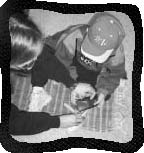
I am now ready and my mom takes me to pre-school.
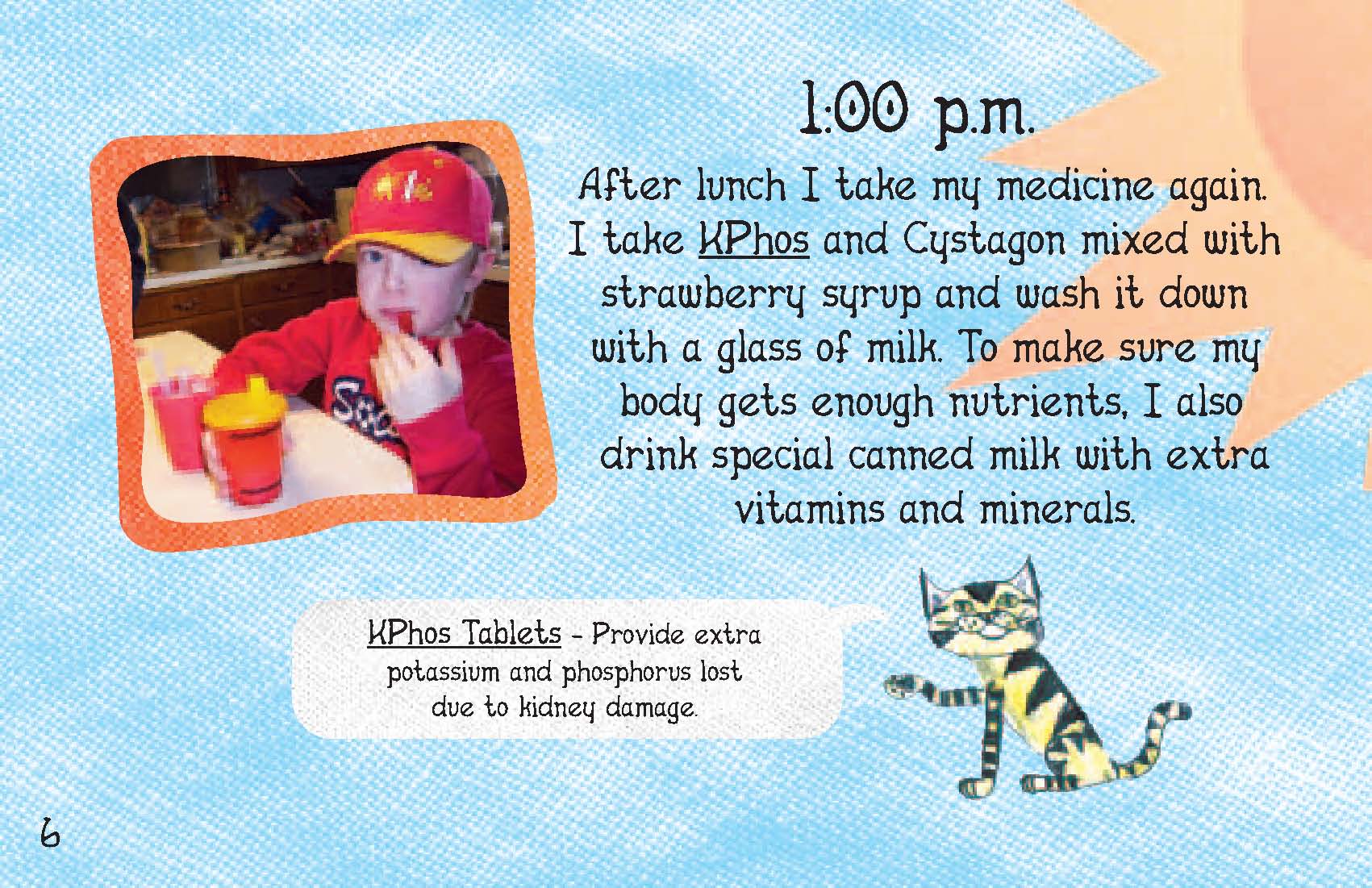
4:00 p.m.
My sisters and brother get off the school bus. He takes eye drops. We both take our liquid meds again. I love to play outside, but the sun is so bright I need to wear a hat and sunglasses or my eyes hurt and I cry because I can’t see.
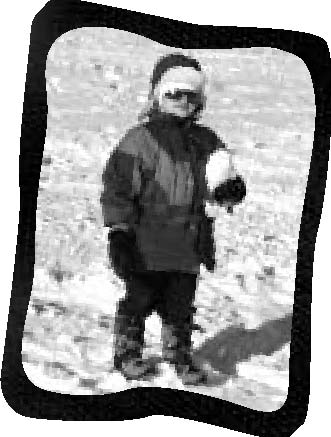
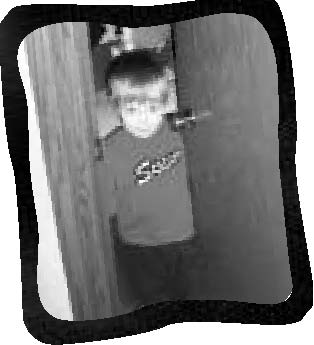
5:00 p.m.
My brother takes eye drops. I get a drink. Cystinosis makes me thirsty all the time and so I drink a lot. Sometimes I have a hard time making it to the bathroom and have accidents. Another change of clothes, how embarrassing!
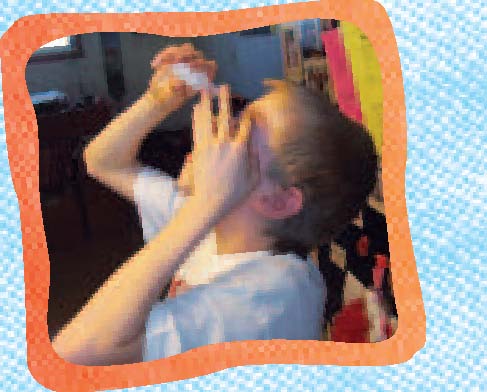 6:00 p.m.
6:00 p.m.
Again, my brother puts in his eye drops.
7:00 p.m.
After dinner I take my KPhos tablets, and Cystagon mixed with strawberry syrup. I drink milk with my medicine. My brother has to put in eye drops again.
8:00 p.m.
My brother and I take the liquid medicines again with a glass of milk. My brother takes eye drops.
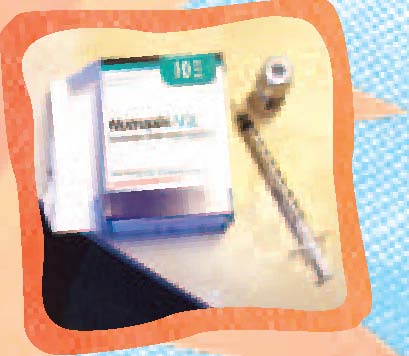 9:00 p.m.
9:00 p.m.
My brother takes eye drops and gets a shot of growth hormone.
1:00 a.m.
My mom or dad wakes me up to take the lastmedicine of the day. I take my last dose of
KPhos tablets and Cystagon capsules dissolved and mixed with strawberry syrup. Because I drank a lot today I have to try to go to the bathroom now too or I might have an accident in my bed. Sometimes I am so
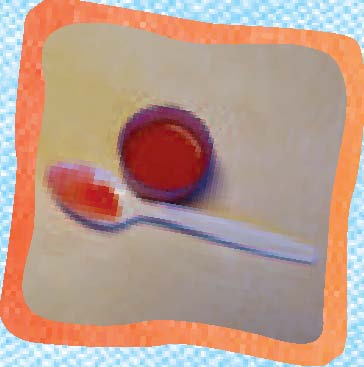
tired I can hardly wake up to take my medicine!
How did my parents find out about this disease?
Well, when my brother was born, my parents were overjoyed. But when he was about 6 months old, bright light hurt his eyesand made him cry. He was thirsty all of the time and he was a really fussy eater.
When he was about 9 months old, he started throwing up a lot.He was not growing. Most children are beginning to walk whenthey are about one year old. My brother was just standing. He would cry sometimes when he stood on his legs. He did not try walking without help.
My parents had to put him in the hospital when he was 18 months old because he got dehydrated.
My parents were worried, but even the doctors did not know what was wrong. They did a lot of tests. Finally, the doctors found out that there was a problem with his kidneys. They did more tests. The doctors found that he had crystals in his eyes. That is why the light made them hurt. They x-rayed his bones
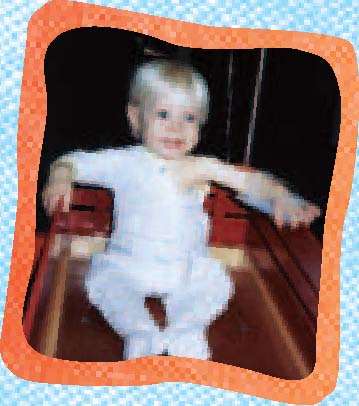
and found out that he had rickets.
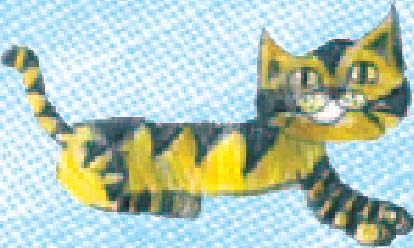
Dehydrated - Means his body was low on fluid. Rickets - a deficiency of vitamin D, calcium and phos-phorus causing defective bone growth in children.
From a blood test the doctors found out that my brother hadCystinosis. My parents were kind of scared because they hadnever heard of it. The doctor told them there was medicine tohelp my brother. He started taking medicine when he was 19months old to help him grow.
When I was born, the doctors tested the placenta. My parentsfound out that I had Cystinosis too. Luckily, doctors knew a lot more about the disease and I started getting medicine when I was 5 weeks old. I hated taking the medicine, but it helped me grow.

My brother and I will take medicine the rest of our lives. Ourlife expectancy is unknown. We know that we will probably need a kidney transplant and have to take anti-rejection medicinealong with all our other medicines.
Some children are not as lucky as my brother and me. After they start taking the medicines, their body rejects the medicine and they throw up within an hour of taking it. Thedoctors have to give them a “mickey button”. It is a tube insert-ed into their stomach or intestines to get medicine and foodinto their bodies. Some children have to have kidney transplantsbecause they did not get the medicine they needed as soon as my brother and I did.
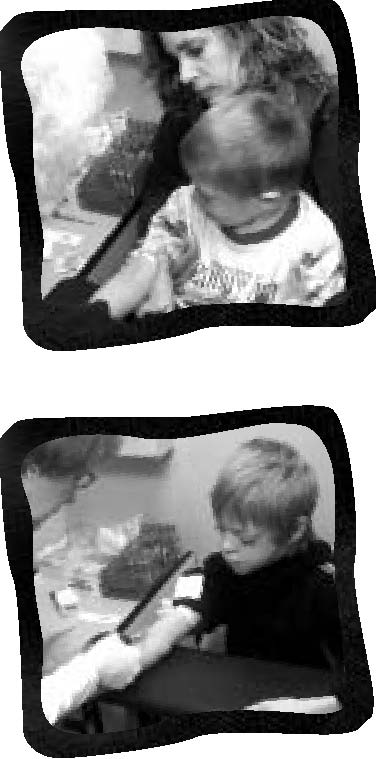
All children with Cystinosis make lots of visits to the hospital for checkups. About every 4 months a nephrologist takes our blood to
check our nutrient levels.
If they are too low,then we have to takemore medicine.
My brother also sees an endocrinologist who checks to see how much he is growing.
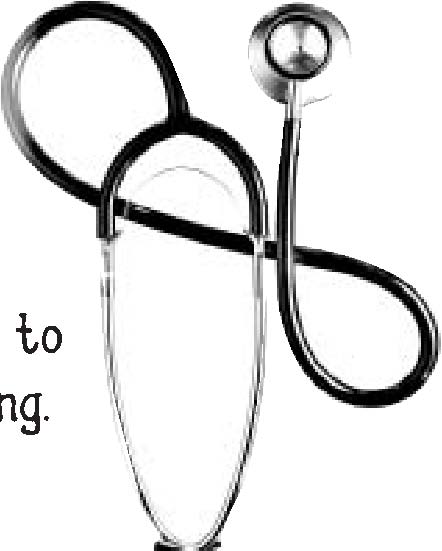
Throughout the year, my brother and I see lots of different kinds of doctors. We see nephrologists (kidney specialists), oph-thalmologists (eye doctors), endocrinologists (gland and hormone
doctors), orthopedic surgeons (doctors that specialize in the skeletal system, muscles, joints, and ligaments), podiatrists (foot doctors) and
our own pediatrician (kids’ doctor).
Every night, my brother gets a shot of growth hormone, because he is shorter than kids younger than he is. I may also get these shots some day.
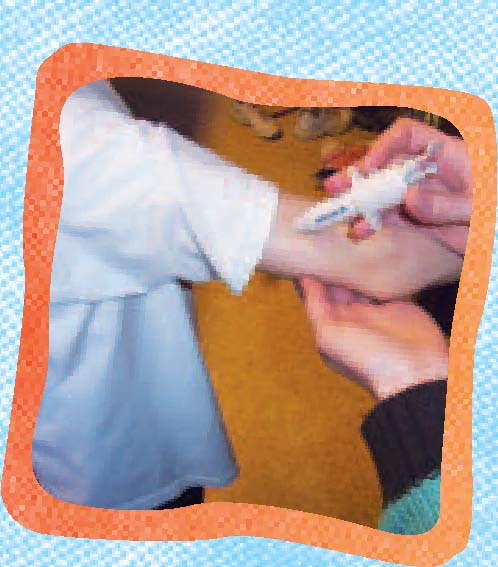
Cystinosis is a rare genetic disease that affects approximately500 people in U.S. and 2000 people worldwide. Many are undiag-nosed because the disease is so rare. My sisters do not have thedisease, but both boys and girls can have Cystinosis.
Doctors are doing lots of testing to help Cystinosis patients.Some of the testing helps children and adults with other genetic diseases too.
Every penny, every nickel, every dime, every dollar is helping research make better medicine and maybe someday doctors will find a cure.

Glossary
Carnitor Provides extra carnitine; essential for muscle development & helps prevent muscle wasting
Cystagon Depletes cystine in the cells. Used to treat nephopathic cystinosis
Cysteamine Eye Drops Taken approximately 8-10 times a day will deplete crystals in the eyes
Cytra K Provides extra potassium & bicarbonate
Diuril Used to help raise bicarbonate levels
Endocrinologist Gland and hormone doctor
Fanconi Syndrome characterized by wasting of substances normally reabsorbed such as sodium, potassium, phosphate, calcium, magnesium, bicarbonate, carnitine, and others. Due to a lack of these nutrients, children with Cystinosis have stunted growth.
Pediatrician Doctor who specializes in children
Podiatrist Foot doctor
Potassium Chloride Provides extra potassium & chloride lost due to kidney damage
Nephropathic cystinosis Genetic disease whose transmission is recessive. The stored amino acid cystine crystallizes within the lysosomes of the cells, and due to a defect in the transport mechanism, cystine crystals accumulate leading to tissue and organ damage. Shawn and his brother have the infantile nephropathic* form of cystinosis (the most common and the most severe). They develop symptoms early on in life and have possible renal failure by late childhood.
Nephrologist Kidney specialist
Ophthalmologist Eye doctor
Orthopedic surgeon Doctor that specializes in the skeletal system, muscles, joints, and ligaments
*NOTE: Each case of Cystinosis is unique, so every patient requires a different medicine recipe and may not take the exact medicines listed in this book.
Special thanks to my brother David for his cat artwork, Dr. Jerry Schneider for his forward to parents, Scott Rahe for doing the book layouts, and
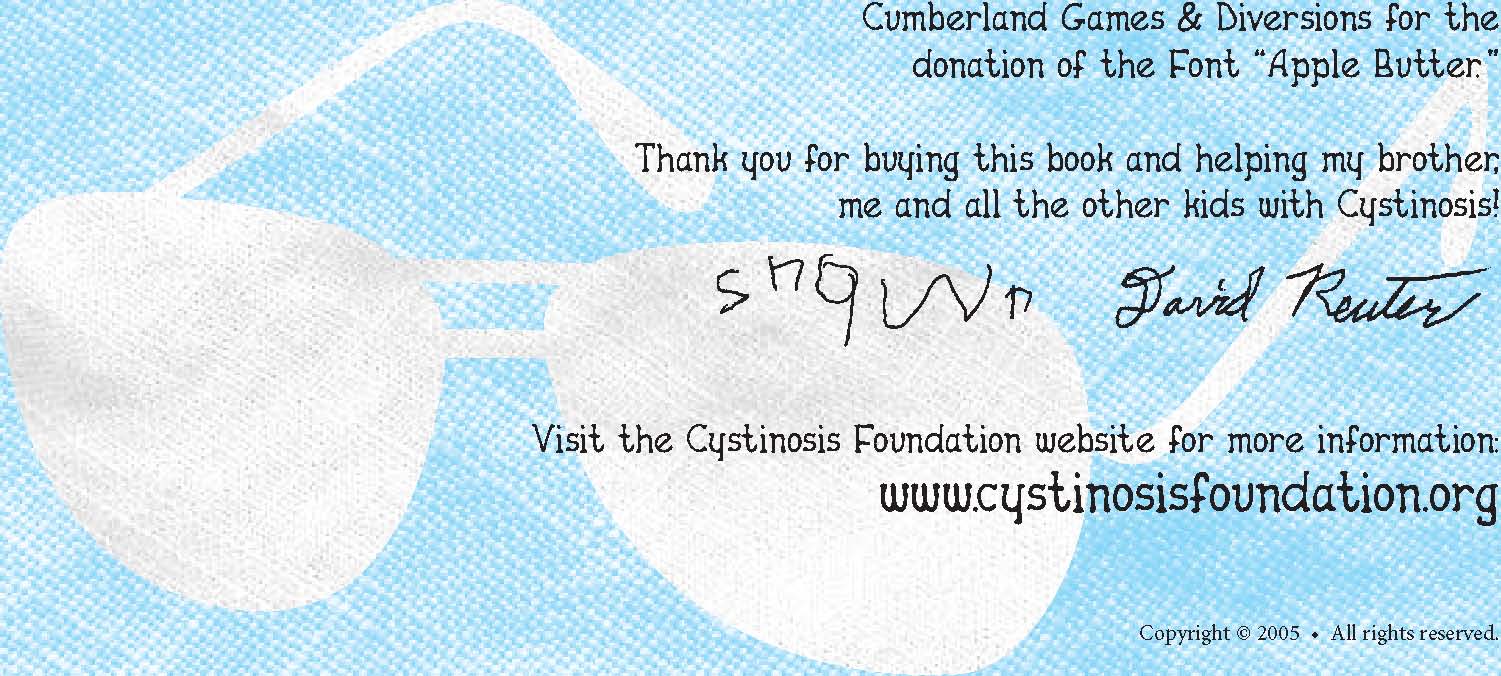
No part of this publication may be reproduced, or stored in a retrieval system, or transmitted in any form or by any means, electronic, mechanical, photocopying, recording, or otherwise without written permission of the authors.
First Printing, March 2005 • Printed at South Central College, Mankato, MN
Would you like a copy of this book?